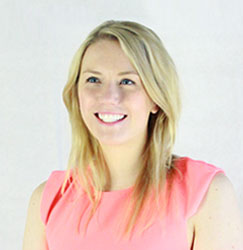First Home Saver Scheme – Are you (or your kids) maximising this opportunity?
First Home Saver Scheme – Are you (or your kids) maximising this opportunity?
[Updated 19 December 2023]
The first home saver scheme (FHSS) has now been accessible for over 5 years, but still is an under-utilised tool in assisting you to save for your – or your kids – first home. Below is a recap on this scheme, and why it may want to be considered as part of either your own savings plan, or if you are a parent looking to assist your children with their first home purchase.
How does the FHSS work?
If you’re aged 18 or over and are an eligible first home buyer, you can withdraw voluntary super contributions made since 1 July 2017 to put towards the purchase of your first home.
Under the current rules, these voluntary contributions are up to $15k per financial year, with a total maximum of $50,000. This applies to each individual buying the home, so if buying with a spouse, friend or sibling, you have access to your own FHSS, meaning you could access up to $100,000.
Although you need to be 18 to withdraw the funds, contributions can happen prior to this age.
What counts as a voluntary super contribution?
Super contributions that can be withdrawn are:
- Salary sacrifice contributions
- Personal deductible contributions (voluntary concessional)
- Personal contributions (voluntary non-concessional).
Important note: Your compulsory super contributions and spouse contributions cannot be withdrawn as part of the FHSS.
How is this beneficial?
As superannuation is usually a more favourable tax environment compared to an individual tax payers own marginal tax rate, the intention is that a first home buyer will be able to grow a deposit quicker and also reduce the tax they pay (and therefore save the difference).
Investment earnings are deemed using a the shortfall interest charge formula from the ATO, which is the 90 day bank bill rate plus 3%. This is generally more than you can earning from the average bank account interest. As a guide, the annual rate for October–December 2023 is 7.15%.
When money is withdrawn from the FHSS, amounts that were contributed as tax deductible contributions are taxed at your marginal rate less a 30% tax offset, as will associated earnings. After tax contributions will attract no tax.
How do I get my savings out of my fund?
You must request a determination from the ATO via your MyGov account prior to signing a contract to buy your first home. This will then tell you how much you can withdraw under the scheme. You can then make a withdrawal request. You can make multiple determination requests.
Based on above, the ATO advises requesting the release as soon as you start to seriously look for a home – eg. when you apply for a home loan pre-approval.
It varies, but as per the ATO website, it usually takes between 15 and 20 business days to send the funds to you.
You’ll need to purchase a home or sign a construction contract within 12 months of receiving the funds. After you sign a contract you must notify the ATO within 28 days.
How much can I withdraw?
The FHSS maximum release amount is the sum of your eligible contributions, taking into account the yearly and total limits, and associated earnings. This amount includes:
- 100% of eligible non-concessional contributions
- 85% of eligible concessional contributions
- Associated earnings calculated on these contributions using a deemed rate of return – this is based on the 90-day Bank Bill rate plus three percentage points (shortfall interest charge rate).
The FHSS maximum release amount takes into account the $15,000 limit from any one year and $50,000 total limit to the total contributions across all years when calculating the eligible contributions, before adding the associated earnings.
What other fine print is there?
You will need to purchase within 12 months of requesting the withdrawal. If you withdraw and then do not purchase a home, you must put back into super as a after tax contribution to avoid penalties.
You must move into your home as soon as possible after purchase or construction is complete, and you
must intend to live in the property for at least 6 months of the first 12 month period where the property can be occupied.
Further information can be found directly on the ATO site.
How we can help
As always, the above information is general in nature only and does not consider your personal circumstances. If you want to know how to apply this to your own personal situation, please book with one of our advisers here.
Rhiannon is the co-founder and leads the strategy & compliance board of Pekada. She is a qualified financial planner based in Melbourne with 14 years of experience. Rhiannon is passionate about helping everyday people benefit from the opportunities which come from a great financial plan. She has been featured as an expert in the Australian Financial Review, Super Guide and Professional Planner.

